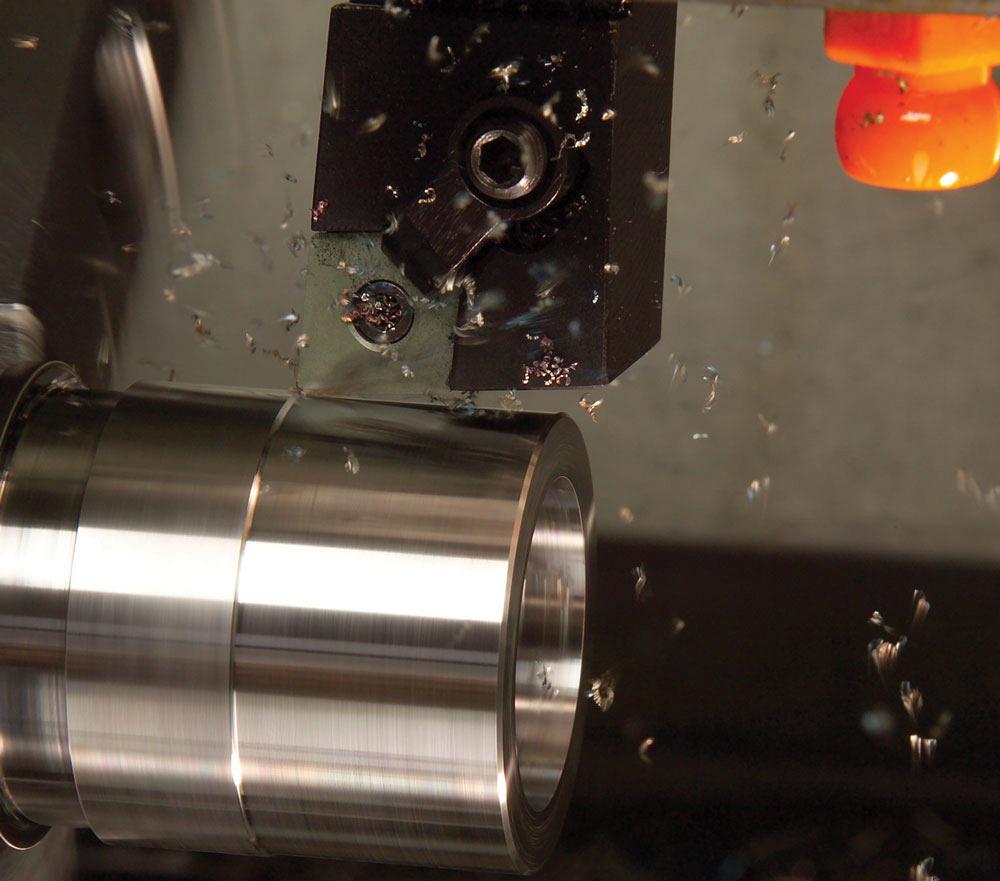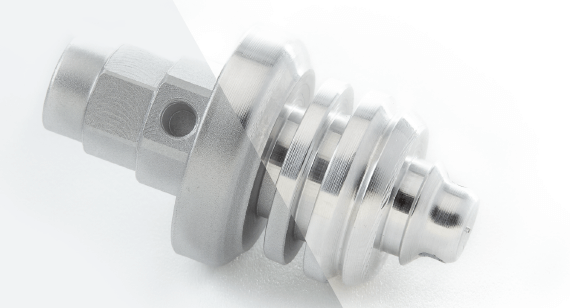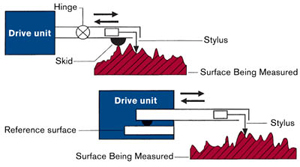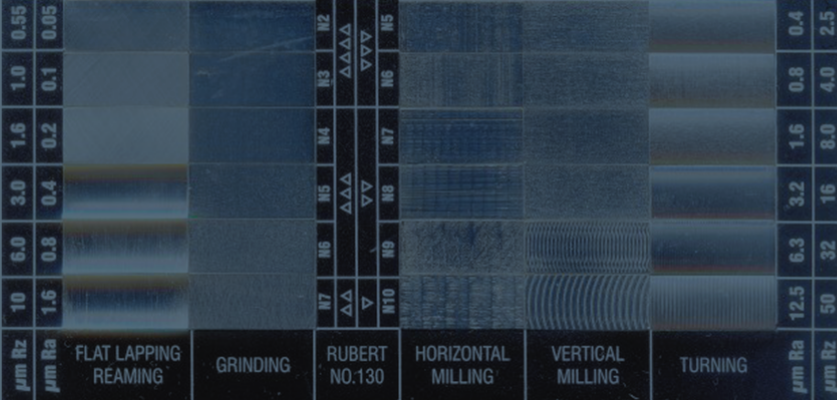Table of Contents
Paragraph 1:
If you are a machinist or a manufacturing engineer, you know that achieving a high-quality surface finish is critical to the success of your work. Whether you are turning materials like steel, aluminum, or titanium, the surface finish can affect the part’s performance, appearance, and even its longevity.
Paragraph 2:
In this article, we will explore some practical tips and techniques to improve surface finish in turning. From selecting the right cutting tool and coolant to adjusting the cutting parameters and using proper finishing techniques, we will cover all the essential aspects of achieving a smooth and flawless surface finish. So, let’s dive in and discover how to take your turning game to the next level!
- Choose the right cutting tool for the job.
- Make sure the workpiece is properly secured and supported.
- Reduce the cutting speed and increase the feed rate.
- Use a coolant or cutting fluid to reduce friction and heat.
- Ensure proper alignment of the tool and workpiece.
- Use a finishing pass with a smaller depth of cut to achieve a smoother surface.
- Regularly maintain and replace worn cutting tools.
How to Improve Surface Finish in Turning?
Turning is a widely used machining process in which a cutting tool is used to remove material from a workpiece to create a desired shape. One of the key objectives of turning is to achieve a smooth and polished surface finish on the workpiece. However, achieving a high-quality surface finish can be challenging, especially when dealing with difficult-to-machine materials. In this article, we will discuss some effective ways to improve surface finish in turning.
1. Use the Right Cutting Tools
The choice of cutting tool is one of the most important factors that can affect the surface finish in turning. Using the right cutting tool can make a significant difference in achieving a smooth and polished surface finish. The cutting tool should have the right geometry, sharpness, and edge preparation to ensure that it can cut through the material cleanly and smoothly.
When selecting a cutting tool, it is important to consider the material being machined, the desired surface finish, and the cutting parameters such as speed, feed, and depth of cut. Carbide inserts are commonly used in turning, but other materials such as ceramic and diamond may be more suitable for certain applications.
2. Choose the Right Cutting Parameters
The cutting parameters such as speed, feed, and depth of cut play a crucial role in achieving a high-quality surface finish. If the cutting parameters are not optimized, it can result in poor surface finish, tool wear, and even damage to the workpiece.
To achieve a smooth surface finish, it is recommended to use a low cutting speed, a small feed rate, and a shallow depth of cut. These parameters can help reduce the amount of heat generated during cutting, minimize tool wear, and improve the surface finish.
3. Use Coolant
Coolant is an essential component in turning operations. It helps to cool the cutting tool, reduce friction, and remove chips from the cutting zone. Using the right coolant can also help improve the surface finish by reducing the amount of built-up edge and ensuring that the chips are evacuated from the cutting zone.
When selecting a coolant, it is important to consider the material being machined and the cutting parameters. Water-soluble coolants are commonly used in turning operations, but other types such as oils and emulsions may be more suitable for certain applications.
4. Minimize Vibration
Vibration is a common problem in turning operations, and it can have a significant impact on the surface finish. High levels of vibration can cause the cutting tool to chatter, resulting in poor surface finish, tool wear, and even damage to the workpiece.
To minimize vibration, it is important to use a rigid setup, ensure that the cutting tool is properly secured, and use the right cutting parameters. Using a higher spindle speed and a lower feed rate can also help reduce vibration and improve the surface finish.
5. Use the Right Workholding
The workholding method used in turning can also affect the surface finish. The workpiece must be held securely and precisely to avoid movement during machining, which can result in poor surface finish and dimensional accuracy.
There are several types of workholding methods available, such as chucks, collets, and faceplates. Choosing the right workholding method depends on the size and shape of the workpiece, as well as the machining requirements.
6. Use a Finishing Pass
A finishing pass is a final cutting pass that is made to achieve a smooth and polished surface finish. This pass is typically made with a small depth of cut and a low feed rate, and it can help remove any remaining tool marks or surface defects.
When using a finishing pass, it is important to ensure that the cutting tool is sharp and properly prepared. The cutting parameters should also be optimized to achieve the desired surface finish.
7. Use Honing or Polishing
In some cases, honing or polishing may be necessary to achieve the desired surface finish. Honing is a process that involves using a fine-grit abrasive stone to remove any remaining tool marks or surface defects. Polishing involves using a polishing compound and a rotating wheel to achieve a mirror-like surface finish.
Honing and polishing can be effective in improving the surface finish, but they can also add time and cost to the machining process. It is important to consider the trade-offs between the benefits and the added cost when deciding whether to use honing or polishing.
8. Consider Using a Different Machining Process
In some cases, it may be more effective to use a different machining process to achieve the desired surface finish. For example, grinding can be used to achieve a very smooth and precise surface finish, but it may not be practical or cost-effective for all applications.
When considering a different machining process, it is important to consider the trade-offs between the benefits and the added cost. The desired surface finish, the material being machined, and the required dimensional accuracy are all important factors to consider.
9. Check for Tool Wear
Tool wear can have a significant impact on the surface finish in turning. As the cutting tool wears, it can become dull and lose its ability to cut cleanly and smoothly. This can result in poor surface finish, tool marks, and even damage to the workpiece.
To avoid tool wear, it is important to use the right cutting tool and cutting parameters, and to check the tool regularly for signs of wear. When tool wear is detected, the cutting tool should be replaced or re-sharpened to ensure that it can continue to cut cleanly and smoothly.
10. Evaluate the Surface Finish
Finally, it is important to evaluate the surface finish regularly to ensure that it meets the required specifications. This can be done using a variety of measurement and inspection techniques such as surface profilometry, optical microscopy, and visual inspection.
By regularly evaluating the surface finish, it is possible to identify any issues that may be affecting the quality of the surface finish and take corrective action as necessary. This can help ensure that the final product meets the required specifications and is of high quality.
In conclusion, achieving a high-quality surface finish in turning requires careful consideration of several factors such as cutting tools, cutting parameters, coolant, workholding, and evaluation techniques. By following the tips outlined in this article, it is possible to achieve a smooth and polished surface finish that meets the required specifications.
Frequently Asked Questions
Improving surface finish in turning is crucial for achieving higher precision and quality in machined parts. Here are some common questions and answers related to improving surface finish in turning:
What is Surface Finish in Turning?
Surface finish in turning refers to the quality and smoothness of the surface of a machined part. It is usually measured in Ra (roughness average) or Rz (average peak-to-valley height). A good surface finish is essential for functional and aesthetic reasons, as it affects the part’s performance, durability, and overall appearance.
There are several factors that affect surface finish in turning, such as cutting speed, feed rate, depth of cut, tool geometry, and material properties. To achieve a better surface finish, it is necessary to optimize these parameters and use appropriate cutting tools and techniques.
How to Select the Right Cutting Tool for Surface Finish?
Choosing the right cutting tool for improving surface finish in turning depends on several factors, such as the material to be machined, the required surface quality, and the cutting conditions. For example, a carbide insert with a sharp edge and a small nose radius is suitable for finishing operations on soft materials, while a ceramic insert with a large nose radius and a positive rake angle is better suited for roughing operations on hard materials.
Other factors to consider when selecting a cutting tool for surface finish include the tool’s coating, geometry, and material, as well as the machine’s rigidity and stability. It is important to consult the tool manufacturer’s recommendations and perform tests to evaluate the tool’s performance in different cutting conditions.
What is the Role of Cutting Parameters in Surface Finish?
Cutting parameters such as cutting speed, feed rate, and depth of cut play a crucial role in improving surface finish in turning. The optimal values of these parameters depend on the material, tool, and part geometry, as well as the desired surface quality and productivity.
For example, a higher cutting speed can improve surface finish by reducing the contact time between the tool and the material, but it may also increase the risk of tool wear and vibration. Similarly, a smaller feed rate can produce a smoother surface but may also result in longer machining time and higher cutting forces. It is important to balance these factors and optimize the cutting parameters for each specific application.
How to Reduce Tool Wear for Better Surface Finish?
Tool wear is a common problem in turning that can affect surface finish, dimensional accuracy, and tool life. To reduce tool wear and improve surface finish, it is important to use the right cutting conditions, such as a proper cutting speed and feed rate, and to choose the right cutting tool and geometry.
Other strategies to reduce tool wear and improve surface finish include using coolant or lubricant to reduce friction and heat, minimizing the tool’s engagement with the material, and using a tool with a higher hardness or wear resistance. It is also important to monitor the tool’s condition and replace it before it becomes too worn or damaged.
What are Some Common Surface Finish Problems in Turning?
Surface finish problems in turning can manifest in various ways, such as chatter marks, tool marks, burrs, scratches, or waviness. These problems can be caused by several factors, such as improper cutting parameters, inadequate tool selection, poor machine setup, or material properties.
To solve surface finish problems in turning, it is necessary to identify the root cause and take appropriate corrective actions, such as adjusting the cutting parameters, changing the tool or its geometry, improving the machine’s rigidity, or changing the material or its properties.
In conclusion, improving the surface finish in turning is essential for achieving high-quality, precise parts. By following the tips outlined above, such as selecting the right cutting tool, using proper cutting parameters, and reducing vibration, you can significantly enhance the surface finish of your turned parts.
Remember, patience and practice are key when it comes to improving surface finish in turning. Take the time to understand the nuances of your particular turning process and experiment with different techniques to find what works best for you.
Ultimately, by improving your surface finish, you can not only enhance the appearance of your parts but also improve their functionality and durability. So, invest in the right tools and techniques, and you’ll be well on your way to achieving the perfect surface finish in your turning projects.
Request a quote today!
[contact-form-7 id="1578" title="Contact form"]
Please compress the file into a ZIP or RAR file before uploading. Alternatively, send through your RFQ by email.
enquires@unitymanufacture.com





